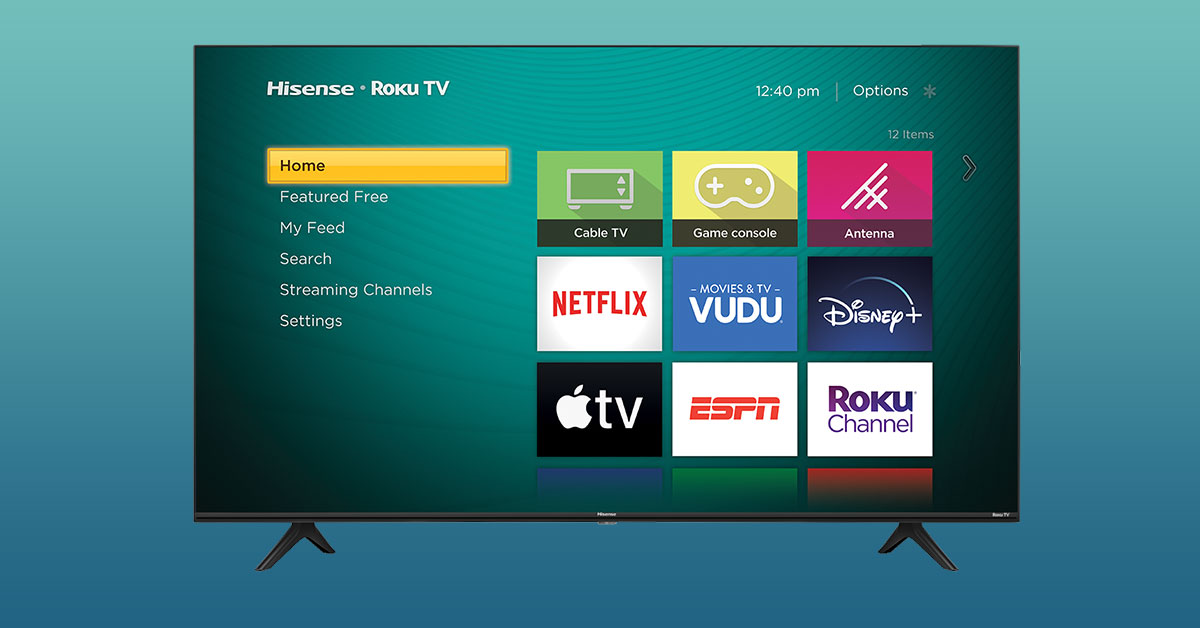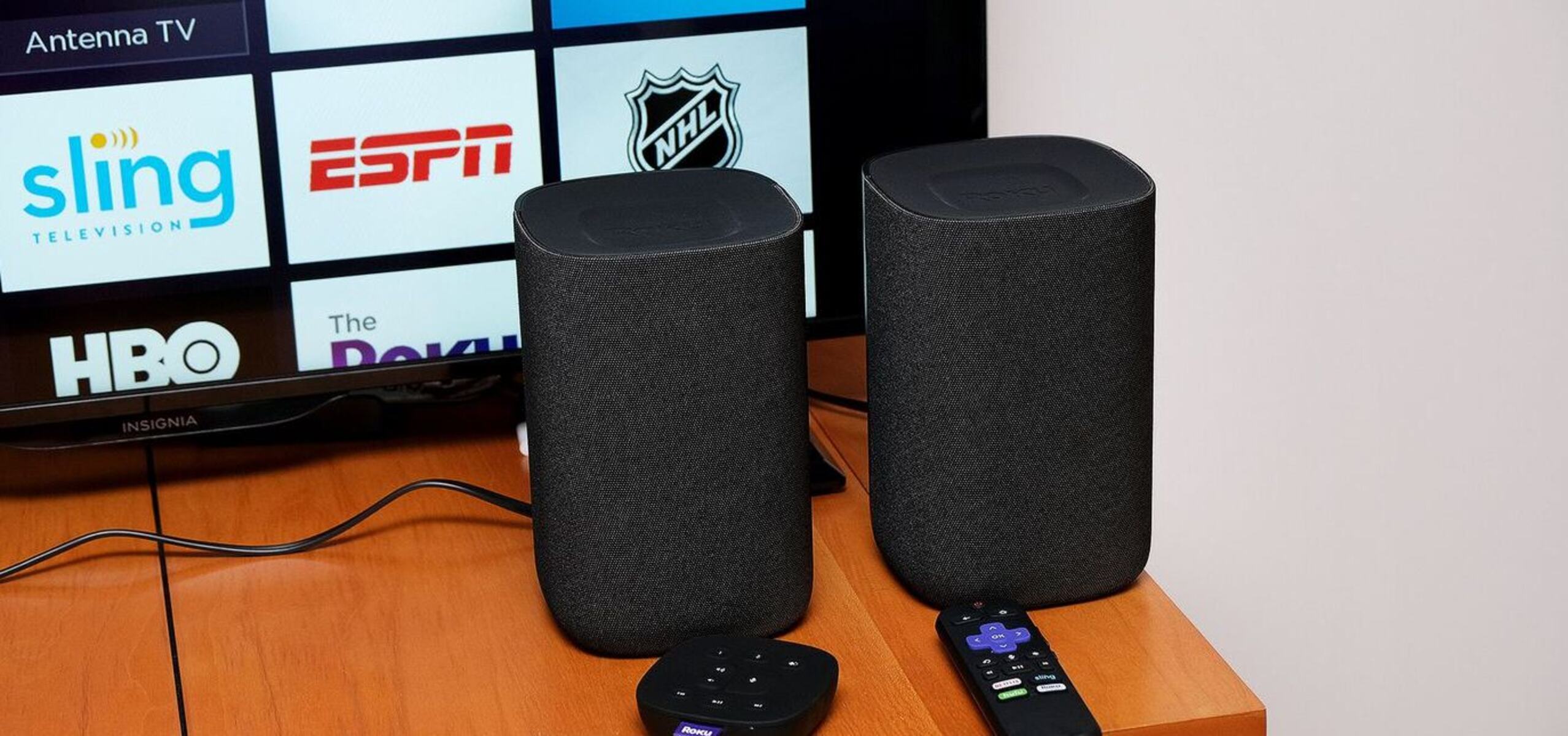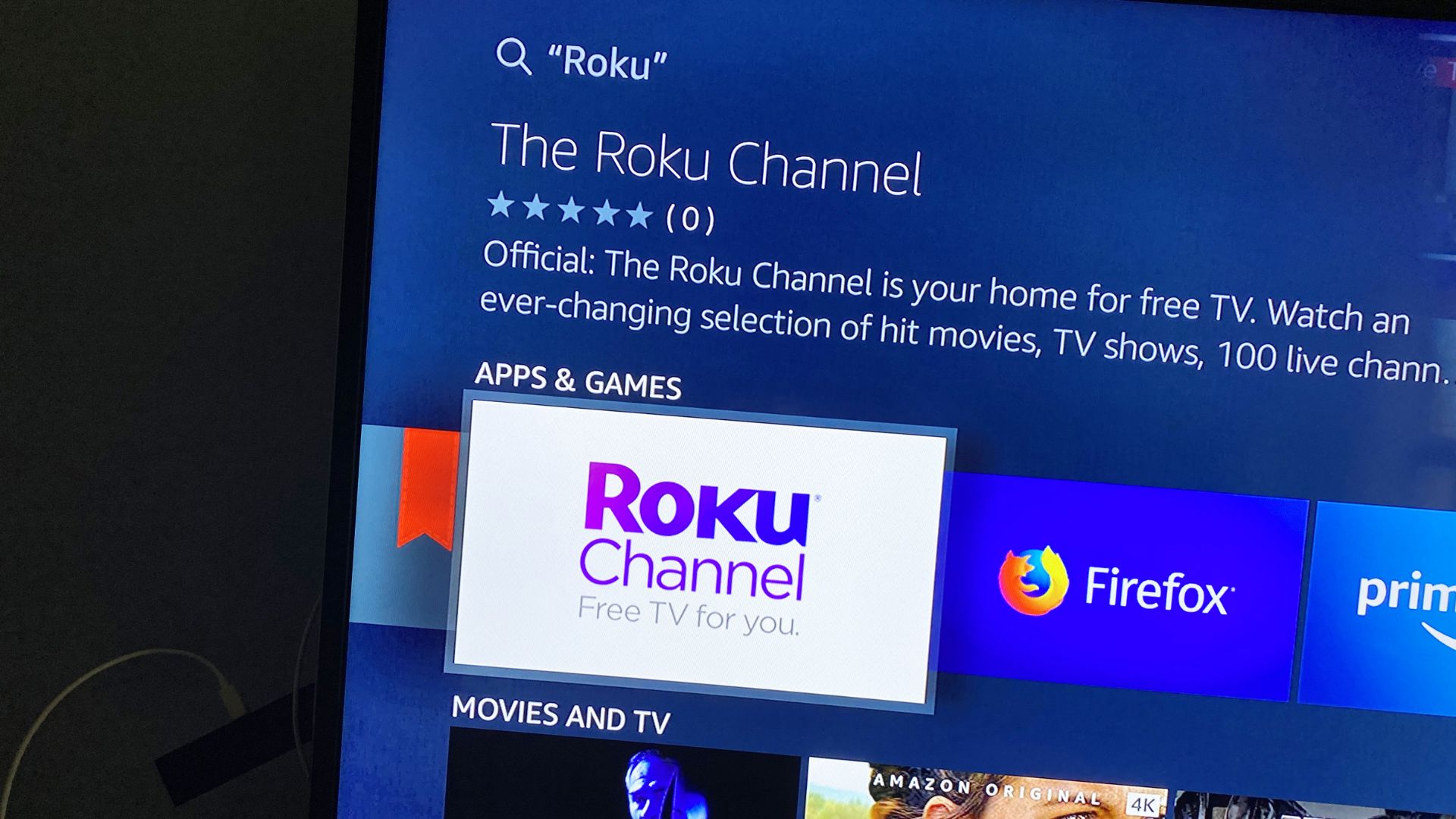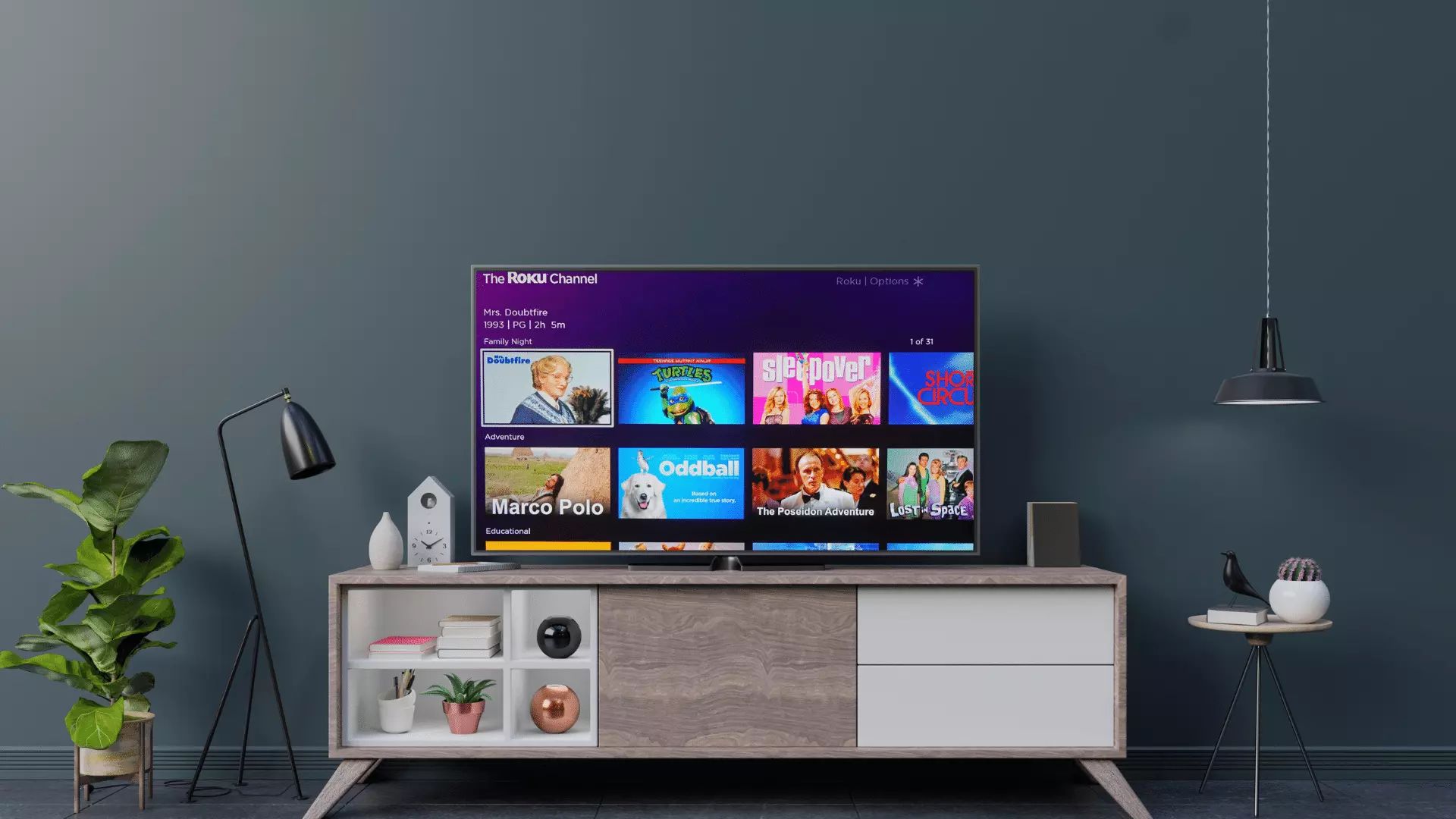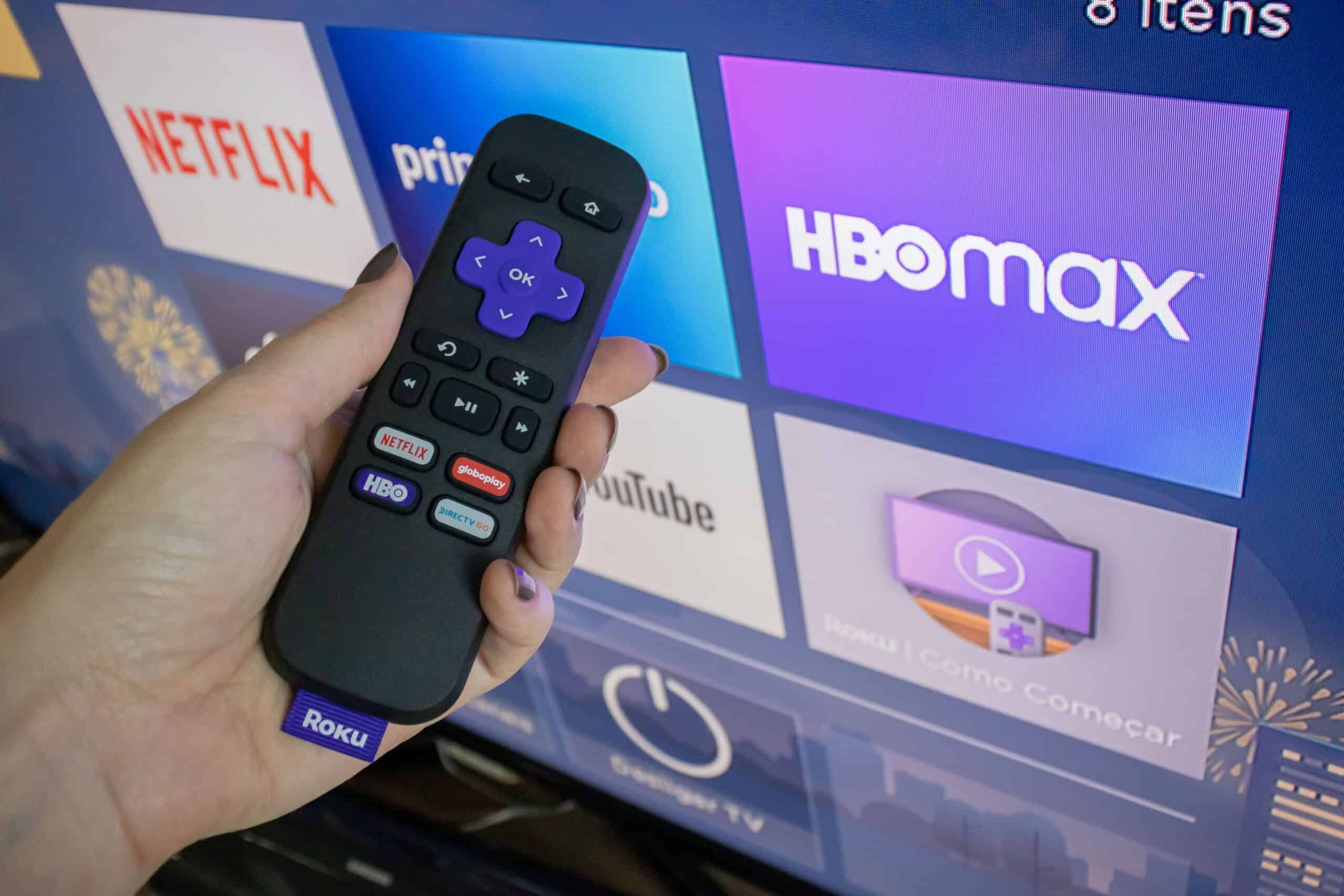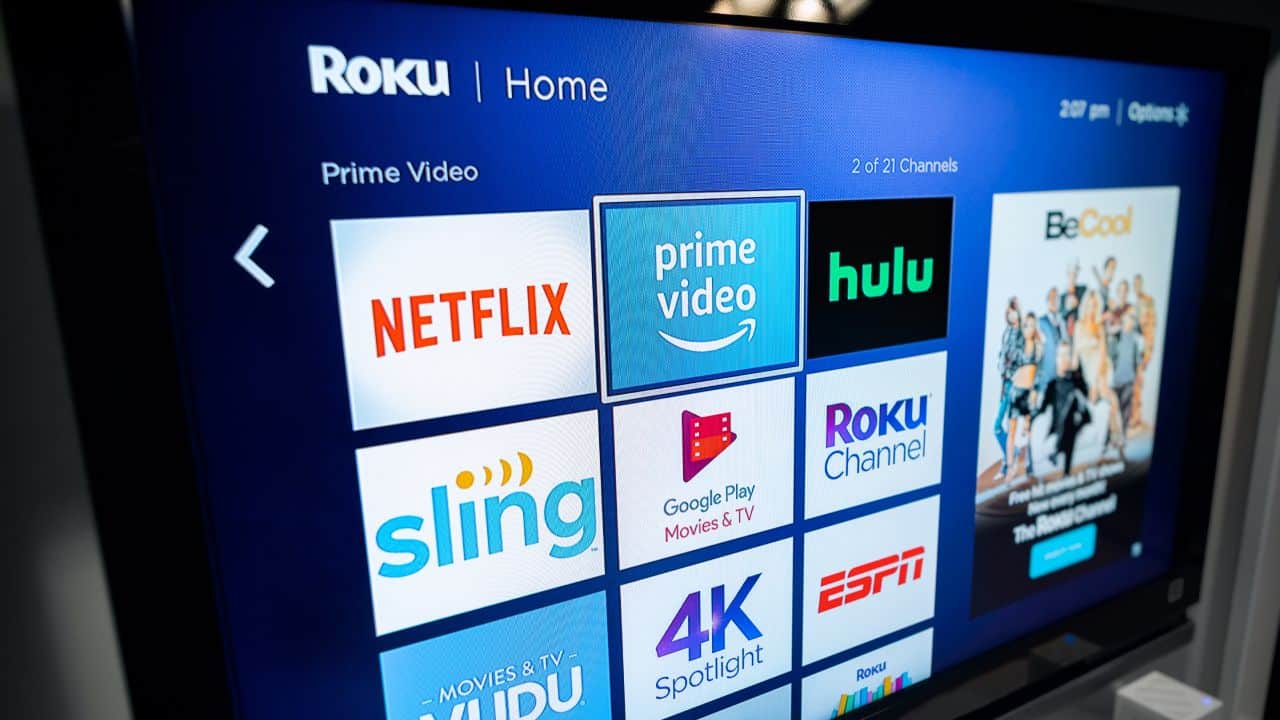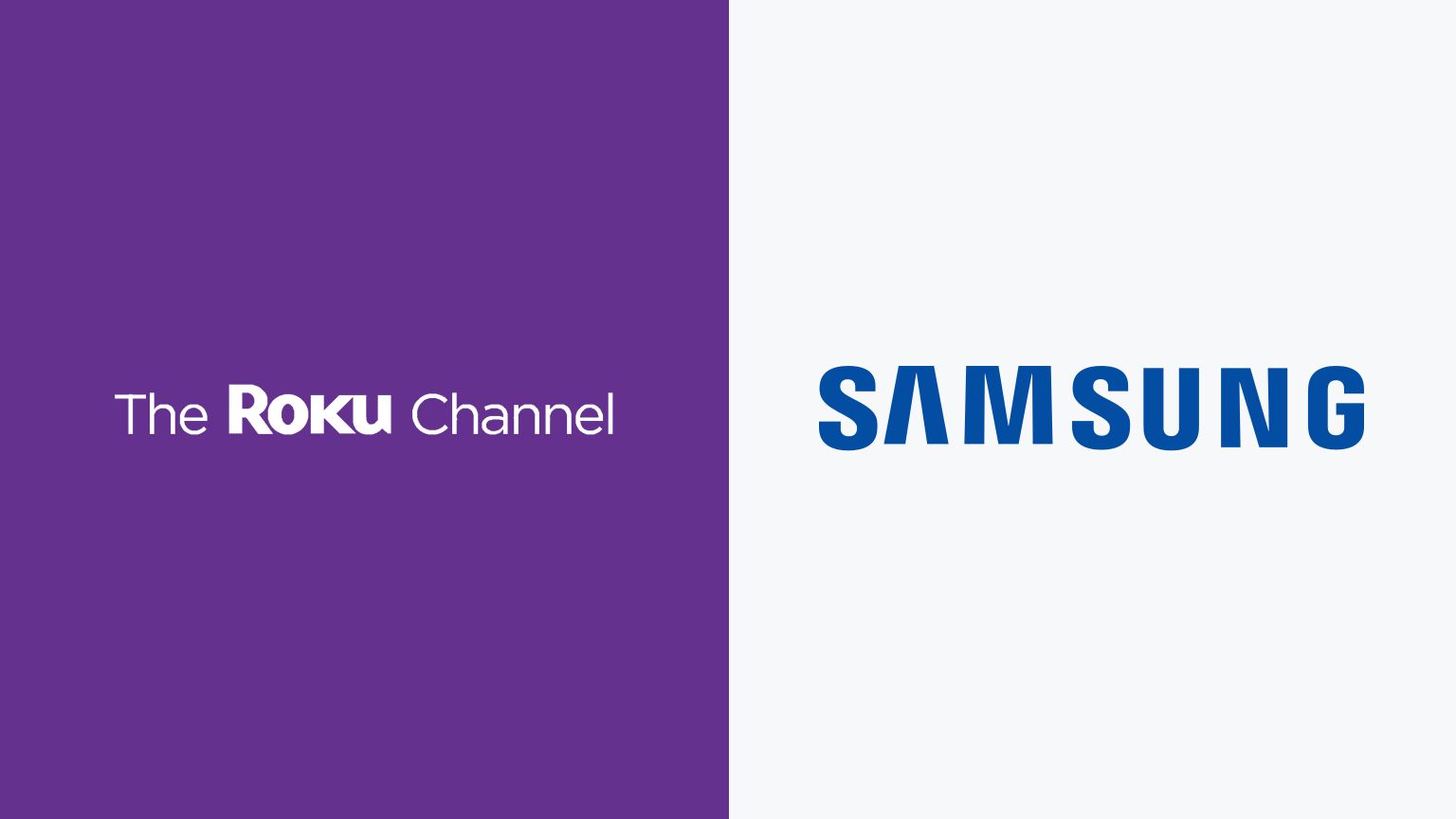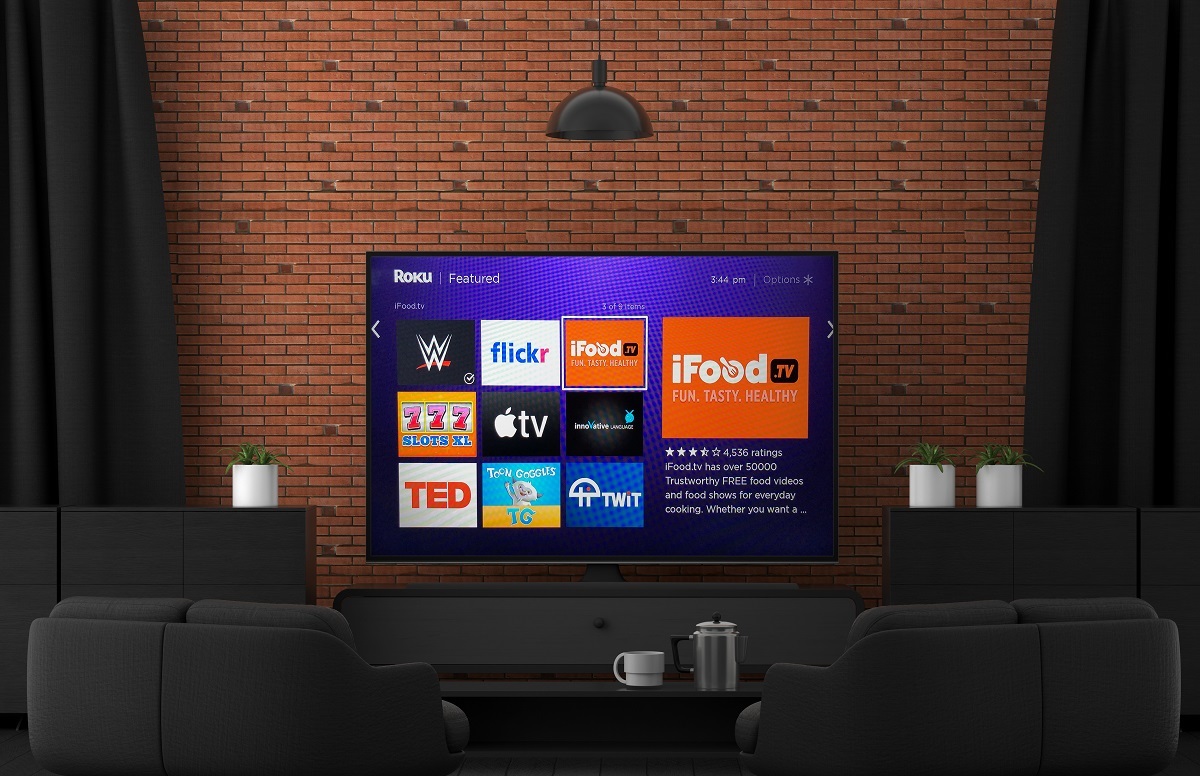Introduction
With the rapid advancement of technology, our television viewing experience has also evolved. Gone are the days of traditional television sets that only provided us with scheduled programming. Today, we have a plethora of options to choose from, including Smart TVs and Roku TVs. Both offer a range of features and functionalities that enhance our entertainment experience. But what exactly is the difference between the two?
Before we dive into the specifics, it’s important to understand that both Smart TVs and Roku TVs are designed to bring internet connectivity and a world of streaming content right to your living room. These devices allow you to access popular streaming platforms, such as Netflix, Hulu, and Amazon Prime Video, directly on your television, transforming it into a multimedia hub.
While both Smart TVs and Roku TVs deliver a similar purpose, the key distinction lies in the operating system that powers them. Smart TVs are equipped with built-in software that enables internet connectivity and access to various applications, while Roku TVs, on the other hand, utilize the Roku operating system specifically designed for streaming content.
Now that we have a basic understanding of the two, let’s explore the features, user interface, content options, remote control functionality, and pricing differences to help you make an informed decision on which TV option is right for you.
What is a Smart TV?
A Smart TV is a television set that is equipped with built-in internet connectivity and software applications, allowing users to access a wide range of online content. Unlike traditional televisions, Smart TVs offer a more interactive and personalized viewing experience by providing access to streaming services, social media platforms, web browsing, and much more.
The key feature that sets Smart TVs apart from regular TVs is their ability to connect to the internet. This enables users to stream content directly from popular platforms like Netflix, YouTube, and Hulu, without the need for additional devices like a media player or gaming console. Smart TVs often come with a built-in Wi-Fi connection or an Ethernet port, making it easy to connect to your home network.
Additionally, Smart TVs offer a variety of other features that enhance your entertainment options. These include voice control capabilities, allowing you to control your TV with simple voice commands, and screen mirroring, which enables you to display content from your smartphone or tablet onto the TV screen.
Another advantage of Smart TVs is their ability to download and install applications. Just like a smartphone, these TVs have their own app stores, allowing you to customize your viewing experience by downloading apps for news, weather, sports, and even games. Some Smart TVs even support multitasking, where you can use apps while still watching your favorite shows.
Smart TVs also often come with advanced display technologies, such as 4K Ultra HD or OLED, offering superior picture quality with stunning details, vibrant colors, and deep blacks. This ensures a visually immersive experience when watching movies, sports, or playing video games.
It is important to note that Smart TVs usually come with a user-friendly interface, making it easy to navigate through the various functions and settings. Depending on the brand and model, these interfaces can vary, but they generally offer intuitive menus and icons to access different features and applications.
Overall, Smart TVs are a convenient and feature-rich option for those looking to go beyond traditional TV viewing. With their ability to connect to the internet, access streaming services, and offer a range of applications, Smart TVs provide a versatile and interactive entertainment experience right from your living room.
What is a Roku TV?
Roku TV is a type of Smart TV that utilizes the Roku operating system, offering a seamless and user-friendly streaming experience. Developed by Roku Inc., the Roku TV platform combines both hardware and software to deliver a comprehensive entertainment solution.
Unlike other Smart TVs that use various operating systems, Roku TVs exclusively use the Roku operating system. This means that the interface, navigation, and app access are consistent across different brands and models of Roku TVs. The Roku operating system is known for its simplicity and ease of use, making it accessible to users of all technical levels.
A key feature of Roku TV is the extensive range of streaming channels available through the Roku Channel Store. With thousands of channels to choose from, including popular options like Netflix, Hulu, Amazon Prime Video, and more, Roku TV ensures that you have access to a vast library of content from different streaming platforms.
Roku TVs also offer a unique feature called Roku Search, which allows you to search for movies, TV shows, actors, and directors across multiple streaming channels. This saves you the hassle of searching through each individual app and provides a convenient way to find your favorite content.
In addition to streaming channels, Roku TV supports a variety of other applications and features. You can access news apps, listen to music, browse the web, and even play games on your TV. The Roku Channel Store offers a wide selection of apps across different categories, ensuring that you can personalize your Roku TV experience according to your preferences.
Another notable aspect of Roku TV is its remote control. The Roku remote is designed for simplicity and ease of use. It features dedicated buttons for popular streaming platforms and a user-friendly layout. Some Roku TV models even come with a voice remote, allowing you to control your TV and search for content using voice commands.
Roku TVs are available in various sizes and price ranges, catering to different budgets and room sizes. Additionally, Roku also offers streaming devices that can be connected to non-Roku TVs, providing the benefits of the Roku platform to those who prefer to stick with their existing television sets.
In summary, Roku TV is a Smart TV that utilizes the Roku operating system, offering a streamlined and user-friendly streaming experience. With its extensive channel selection, intuitive interface, and convenient features, Roku TV provides a versatile and enjoyable entertainment solution for all users.
Features of a Smart TV
Smart TVs come packed with a plethora of features that elevate the television viewing experience. These features go beyond traditional TV functionality, providing users with a wide range of entertainment options and interactive capabilities.
One of the key features of a Smart TV is its internet connectivity. This allows users to access streaming services like Netflix, Hulu, and Amazon Prime Video directly on their television screens. With a stable internet connection, you can stream your favorite movies, TV shows, and online content without the need for additional devices.
Smart TVs also offer a variety of applications through their built-in app stores. These apps provide access to a range of services, such as news, sports, weather, social media, and even gaming. With the ability to download and install apps, you can customize your Smart TV to suit your preferences and interests, turning it into a versatile multimedia device.
Another notable feature of Smart TVs is their compatibility with voice control technology. Many modern Smart TVs support voice commands, allowing you to control your TV, search for content, and even adjust settings using simple spoken instructions. This hands-free functionality adds convenience and ease to your TV-watching experience.
Smart TVs also come equipped with advanced display technologies to enhance picture quality. This includes features like 4K Ultra HD resolution, High Dynamic Range (HDR), and wide color gamut support. These technologies result in sharper, more vibrant, and true-to-life visuals, ensuring a stunning viewing experience for movies, sports, and other content.
In addition to streaming capabilities, Smart TVs often provide connectivity options for external devices. This includes HDMI ports to connect gaming consoles, Blu-ray players, and soundbars, allowing you to enjoy a seamless multimedia experience. Some Smart TVs also offer USB ports for playing media files from external storage devices like USB drives.
Smart TVs are designed with user-friendly interfaces that make navigation and interaction effortless. The interfaces may vary across different brands and models, but they generally feature intuitive menus, easy-to-use remote controls, and on-screen prompts, enabling users to access various features and settings effortlessly.
Smart TVs also often support screen mirroring, which allows you to cast your smartphone or tablet’s screen onto the TV. This enables you to display photos, videos, and other media content from your mobile devices on the big screen, making it ideal for sharing with friends and family.
Overall, the features of a Smart TV offer a comprehensive and immersive entertainment experience. From internet connectivity and app access to voice control and advanced display technologies, Smart TVs provide a wide array of options to cater to your entertainment needs.
Features of a Roku TV
Roku TVs offer a host of features that make them a popular choice among users seeking a convenient and user-friendly streaming experience. From an intuitive interface to a wide range of streaming channels, Roku TVs provide an array of features that enhance your entertainment options.
One of the standout features of a Roku TV is the Roku Channel Store. With thousands of streaming channels available, including popular options like Netflix, Hulu, and Amazon Prime Video, Roku TV ensures that you have access to a vast library of content. Whether you’re into movies, TV shows, news, sports, or niche programming, Roku TV offers a channel for every interest.
Roku TVs also boast a powerful search feature, aptly named Roku Search. This feature allows you to search for movies, TV shows, actors, and directors across multiple streaming channels. Roku Search simplifies the process of finding your favorite content by aggregating results from various sources, eliminating the need to navigate through individual apps.
In addition to the extensive selection of streaming channels, Roku TVs support a variety of other applications. You can access news apps to stay updated, music apps to enjoy your favorite tunes, and even games to entertain yourself. The Roku Channel Store offers a wide range of apps, ensuring that you can customize your Roku TV experience according to your preferences and interests.
The remote control is another notable feature of Roku TVs. The Roku remote is designed for simplicity and ease of use, featuring dedicated buttons for popular streaming channels and a user-friendly layout. Some Roku TV models even come with a voice remote, allowing you to control your TV and search for content using voice commands, enhancing the convenience and accessibility of your Roku TV experience.
Roku TVs also offer screen mirroring capabilities, enabling you to cast the screen of your smartphone, tablet, or computer onto the TV. This feature allows you to share photos, videos, presentations, and more on the big screen, making it ideal for sharing content with friends, family, or colleagues.
Moreover, Roku TVs are available in various sizes and price ranges, catering to different user preferences and budgets. This makes it easier to find a Roku TV that suits your specific needs and fits seamlessly into your living space.
Another advantage of Roku TVs is the consistency of the interface and user experience across different brands and models. Regardless of the specific Roku TV you choose, the interface remains the same, ensuring a familiar and user-friendly experience for all users. This consistency streamlines the learning curve and makes it easier to navigate and access the various features and channels available on Roku TV.
In summary, the features of a Roku TV combine an extensive range of streaming channels, a powerful search function, user-friendly remote control options, screen mirroring capabilities, and consistency across different models and brands. These features make Roku TV a compelling choice for those seeking a seamless and enjoyable streaming experience.
User Interface and Navigation
When it comes to user interface and navigation, both Smart TVs and Roku TVs strive to deliver a seamless and user-friendly experience. However, there are some differences in how these interfaces are designed and how users interact with them.
Smart TVs typically come with their own custom interfaces, developed by the manufacturer. These interfaces often feature a combination of menus, icons, and widgets displayed on the screen, allowing users to navigate through various functions and settings. The layout and design of the interface may vary depending on the brand and model of the Smart TV.
Roku TVs, on the other hand, utilize the Roku operating system, which has a standardized interface across different brands and models. The Roku interface is known for its simplicity and ease of use. It features a grid-style home screen that displays a variety of streaming channels and apps. Users can easily navigate through the available options using the directional buttons on the Roku remote.
Both Smart TVs and Roku TVs support on-screen menus that provide access to different features and settings. These menus allow users to adjust display settings, audio settings, network settings, and other preferences according to their viewing preferences. Smart TVs may have more customizable options depending on the specific brand and model, whereas Roku TVs offer a more streamlined approach.
In terms of navigation, Smart TVs often rely on a combination of remote control buttons, on-screen menus, and voice commands (if supported). Users can navigate through different apps and features using the arrow keys on their remote control or by scrolling through the on-screen menus. Some Smart TVs also support voice control, enabling users to search for content or change settings using voice commands.
Roku TVs have a straightforward navigation system. The Roku remote features arrow keys that allow users to navigate through different channels and apps on the home screen. The remote also includes dedicated buttons for popular streaming platforms, providing easy access to those channels. Users can easily move through the grid-style interface to find and open their desired apps.
Both Smart TVs and Roku TVs support other methods of navigation as well. Many newer models of Smart TVs offer smartphone apps that allow users to control their TV via their mobile devices. This app-based remote control can provide additional functionality and convenience. Similarly, Roku TVs also have a mobile app that can be used as a remote control, as well as for mirroring content from mobile devices.
In summary, both Smart TVs and Roku TVs offer user-friendly interfaces and navigation systems. Smart TVs usually have custom interfaces developed by their manufacturers, while Roku TVs utilize the standardized Roku operating system. While the specific design and features may vary, both types of TVs provide menus, on-screen prompts, and remote controls to navigate through apps, settings, and preferences. Whether you prefer the customized interface of a Smart TV or the simplicity of the Roku interface, both options strive to make your TV viewing experience as easy and enjoyable as possible.
Content and Apps
When it comes to content and apps, both Smart TVs and Roku TVs offer a wide range of options to keep you entertained. Let’s take a closer look at how these TVs provide access to various streaming services, apps, and content.
Smart TVs come with built-in apps and offer access to popular streaming platforms. These platforms include Netflix, Hulu, Amazon Prime Video, and more. Smart TVs often have their own app stores, where you can download additional apps for news, sports, weather, social media, and gaming. The availability of apps may vary depending on the brand and model of the Smart TV, but you can expect a diverse selection of apps to cater to different interests and preferences.
Roku TVs, on the other hand, have a distinct advantage when it comes to content and apps. Roku has an extensive selection of streaming channels available through their Roku Channel Store. With thousands of channels to choose from, including both free and paid options, you can access a wide range of content. This includes popular streaming services like Netflix, Hulu, and Amazon Prime Video, as well as niche channels for specific interests like cooking, fitness, and more. The Roku Channel Store ensures that you have a vast library of content at your fingertips.
In addition to streaming services, both Smart TVs and Roku TVs provide access to other applications. Smart TVs often support web browsing, allowing you to surf the internet directly from your TV. You can visit your favorite websites, check social media, and even access online shopping platforms. Some Smart TVs also offer productivity apps, allowing you to access documents, calendars, and email.
Roku TVs also offer a wide range of additional applications. You can find news apps to stay updated on current events, music apps to enjoy your favorite songs, gaming apps to entertain yourself, and much more. The variety of apps available in the Roku Channel Store ensures that you can customize your Roku TV experience to suit your interests and preferences.
It is worth noting that while both Smart TVs and Roku TVs offer a vast array of content and apps, the availability of specific services and apps may vary. Licensing agreements and partnerships with content providers can influence which services are available on each platform. It’s always a good idea to check the available apps and streaming services for a particular brand and model before making a purchase.
Both Smart TVs and Roku TVs constantly update their app offerings to provide the latest and most popular content. They often roll out updates to improve functionality and add new features. This ensures that you can continue to enjoy a diverse range of content and applications, keeping your TV experience fresh and exciting.
In summary, both Smart TVs and Roku TVs offer access to a wide range of content and apps. Smart TVs provide built-in apps and access to popular streaming services, while Roku TVs offer an extensive selection of streaming channels through the Roku Channel Store. Whether you prefer the pre-installed apps of a Smart TV or the vast channel options of a Roku TV, both options ensure that you have ample choices to meet your entertainment needs.
Remote Control
The remote control is an essential component of any television, and both Smart TVs and Roku TVs come with their own unique remote controls, designed to enhance the user experience and provide convenient navigation.
Smart TVs typically come with a remote control that is specific to the brand and model. These remote controls usually have a traditional button layout, with directional arrows, number buttons, and additional buttons for volume control, menu navigation, and input selection. Some Smart TV remote controls also include dedicated buttons for popular streaming platforms, allowing for quick and easy access to your favorite apps.
In recent years, many Smart TVs have also introduced smart remote controls that offer additional functionality. These smart remotes often feature built-in microphones or voice control buttons, enabling users to control their Smart TV using voice commands. With voice control, you can search for content, change channels, adjust settings, and even control other smart devices in your home, providing a hands-free and intuitive experience.
Roku TVs, on the other hand, have their own unique remote controls designed specifically for the Roku operating system. The Roku remote typically features directional arrows for navigation through the on-screen interface and menu. It also includes dedicated buttons for popular streaming services like Netflix, Hulu, and Amazon Prime Video, allowing for quick access to these platforms with just one click.
One prominent feature of Roku remote controls is the inclusion of a dedicated “Home” button. This button takes you directly to the Roku home screen, where you can access all your installed channels and applications. It provides a quick and easy way to navigate between different channels without having to go through multiple menus or screens.
Furthermore, some Roku remote controls come with additional features like volume buttons and power buttons, allowing you to control the TV itself. This eliminates the need for a separate remote control to adjust the volume or turn the TV on and off.
In recent years, Roku has also introduced voice remote controls. These remotes include a built-in microphone that enables voice search capabilities. You can simply speak into the remote control to search for movies, TV shows, actors, and genres across different streaming channels on your Roku TV.
Both Smart TV remote controls and Roku remote controls often have additional buttons for controlling other devices. For example, they may include buttons to control external audio devices, change the input source, or adjust the display settings.
In summary, both Smart TVs and Roku TVs come with their own unique remote controls designed to provide convenient navigation and enhance the user experience. Smart TV remote controls generally have a traditional button layout, while Roku remote controls have a simplified design with dedicated buttons for popular streaming services and a prominent Home button. The inclusion of advanced features like voice control and additional device control options further adds to the convenience of using these remote controls.
Price and Cost
When it comes to purchasing a television, price is an important factor to consider. Both Smart TVs and Roku TVs come in a range of prices to suit different budgets and preferences, allowing users to choose the option that best fits their needs.
Smart TVs are available in a wide range of brands and models, offering different features and specifications. The price of a Smart TV can vary significantly depending on factors such as the display technology, screen size, picture quality, and additional features. Generally, Smart TVs tend to be more expensive compared to regular non-smart TVs due to the added functionality and connectivity options.
The cost of a Smart TV can range from a few hundred dollars for smaller or entry-level models to several thousand dollars for larger, high-end models with advanced display technologies like OLED or QLED. The price also depends on the brand, as some well-known brands tend to have higher price tags. Additionally, newer models with the latest technology and features may be more expensive compared to older models.
On the other hand, Roku TVs are known for their affordability and value for money. Roku TVs are available in a variety of screen sizes and price points, catering to different budgets. You can find Roku TVs that are competitively priced in the mid-range and entry-level segments, offering a cost-effective option for those looking to enjoy streaming services and a user-friendly interface without breaking the bank.
Roku TVs are often seen as a more budget-friendly choice compared to Smart TVs, primarily because of the simplified interface and the use of the Roku operating system. Despite their affordable price, Roku TVs still provide access to a vast library of streaming channels and apps, ensuring a wide range of content options for users.
It’s worth noting that the price of both Smart TVs and Roku TVs can fluctuate depending on factors such as sales, discounts, and holiday promotions. It’s always a good idea to compare prices across different retailers and online marketplaces to find the best deal.
In addition to the initial purchase cost, it’s important to consider ongoing cost factors when choosing between a Smart TV and a Roku TV. Both types of TVs require an internet connection for streaming content, so you’ll need to factor in the cost of a reliable internet service provider. Additionally, some streaming services may require subscriptions, which can add to the overall cost of using the TV. However, it’s important to note that many popular streaming services offer both free and paid content options, allowing users to choose the level of subscription that fits their preferences and budget.
In summary, the price of Smart TVs can vary significantly depending on factors such as brand, size, features, and display technology. Roku TVs, on the other hand, tend to be more affordable and offer a cost-effective option for users looking to enjoy streaming services without breaking the bank. It’s important to consider your budget and requirements when making a purchase decision and take ongoing costs such as internet connection and streaming service subscriptions into account.
Conclusion
Both Smart TVs and Roku TVs offer a plethora of features and functionalities that enhance the television viewing experience. While they may share some similarities, there are distinct differences that can influence your decision when choosing between the two options.
Smart TVs are known for their built-in software and customizable interfaces. They provide internet connectivity, access to a wide range of apps, and often support advanced display technologies. Smart TVs offer a more personalized and versatile entertainment experience, with the ability to stream content from popular platforms and customize the TV according to individual preferences.
Roku TVs, on the other hand, utilize the Roku operating system to deliver a simplified and user-friendly streaming experience. With a consistent interface and easy navigation, Roku TVs offer access to thousands of streaming channels through the Roku Channel Store. They provide an extensive range of content options and often come at more affordable price points, making them an attractive choice for those on a budget.
When making a decision between a Smart TV and a Roku TV, it is important to consider your specific needs and preferences. If you value a highly customizable interface, advanced display technologies, and a wide range of app options, a Smart TV may be the right choice for you. On the other hand, if you prefer a simplified interface, a large selection of streaming channels, and an affordable price, a Roku TV may be more suited to your needs.
Ultimately, whether you choose a Smart TV or a Roku TV, both options offer an enhanced television viewing experience by providing access to a wide range of streaming content, intuitive interfaces, and convenient features. Regardless of your choice, you can enjoy a seamless and immersive entertainment experience right from the comfort of your living room.







